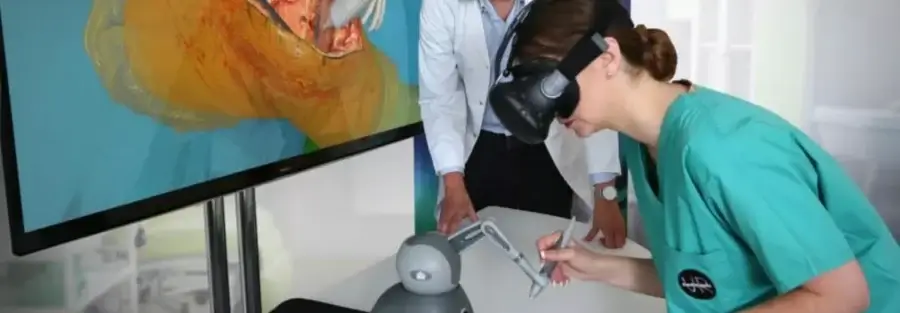
Virtual reality (VR) technology has become a valuable tool for training and skill development. Through the creation of immersive virtual environments, VR offers a unique and effective form of learning that allows users to experience real-world situations in a safe and controlled manner.
In education, VR can be used for a variety of purposes, such as teaching science, history, or art. Students can explore the human body in 3D, visit historic monuments, or even travel through time to experience historic events. VR can also be used for training practical skills, such as surgery or car repair; you will need a simulation of the experience in a controlled and risk-free environment.
In the business environment, VR can be used for employee training and skill development. For example, in the construction industry, workers can learn to operate heavy machinery in a virtual environment before doing so on a real construction site. In this way, safety risks are reduced and work efficiency is increased.
In addition, VR can also be used for soft skills training, such as communication and decision-making. Employees can be exposed to difficult situations in a virtual environment and practice problem solving and decision-making in a safe and controlled environment. This can increase employee confidence and competence in real situations.
In short, VR offers a unique opportunity for immersive and effective learning that can be used both in education and business. By providing a practical and realistic experience in a controlled virtual environment, VR can help users develop skills and competencies in a safe and risk-free environment.
In the business environment, VR can be used to train employees in specific skills, such as operating machinery or performing complex tasks. For example, a manufacturing company could create an VR simulation that allows employees to practice using a machine without having to risk making costly mistakes in the real world. Not only can this help employees develop skills more quickly, but it can also reduce the costs and risks associated with real-world training.
In addition, VR can be an effective tool for the formation of soft skills, such as communication and teamwork. Employees can participate in VR simulations where they have to interact with virtual characters to solve problems or work on projects. These simulations can help employees develop leadership and collaboration skills in a safe and controlled environment.
In education, VR can be used to provide students with a more immersive and effective learning experience. For example, a biology class could use VR to allow students to explore the human body in detail and in real time, allowing them to better understand how the body works and how different body systems are related.
In addition, VR can be used to create more personalized and accessible learning experiences. Students can explore VR content at their own pace and in their own time, which can be especially improved for those who struggle to keep up to date in a traditional classroom.
In conclusion, VR is a powerful tool that can be used both in education and business for training and skill development. By providing more immersive and personalized learning experiences, VR can help students and employees develop skills faster and more effectively.
